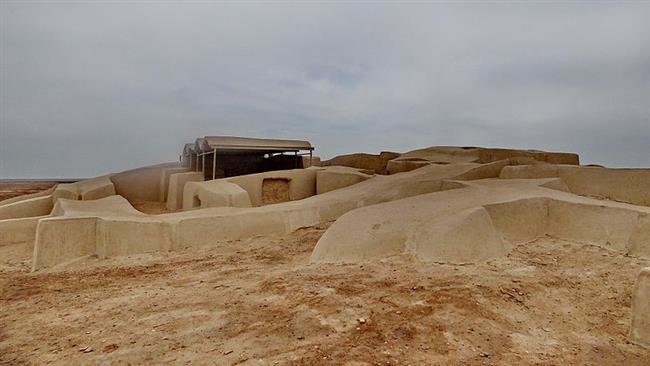Iranian, Italian archeologists to shed new light on Burnt City

TEHRAN – A team of Iranian and Italian archeologists and researchers have commenced large-scale interdisciplinary research to provide a clearer picture of life and urban settlement in the Burnt City, a UNESCO World Heritage site in southeast Iran that was thriving in the Bronze Age.
The Italian squad led by Enrico Ascalone along with their Iranian fellows supervised by Hossein Moradi are set to shed a new light on the Burnt City through paleoethnobotany, anthropology, zooarchaeology, and aerial survey.
“Retrenchers are aiming to study human remains retrieved from the Burnt City’s cemeteries in order to define both fragments of the lifestyle and human races through conducting genetic analysis,” CHTN quoted Moradi as saying on Sunday.
Known as Shahr-e Sukhteh in Persian, the site is situated at the junction of Bronze Age trade routes crossing the Iranian plateau, remains of the mud brick city bear witness to the emergence of the first complex societies in eastern Iran.
Spanning an area of 280 hectares, the site had extensive commercial, political, and social relations with other important cities in the region.
Founded around 3200 BC, the city was populated during four main periods up to 1800 BC, during which time there developed several distinct areas within the city. These include a monumental area, residential areas, industrial zones and a graveyard.
According to Press TV, the Burnt City was first excavated by the Istituto Italiano per l’Africa e l’Oriente (IsIAO) team led by Maurizio Tosi in 1967. The reputed Italian archaeobotanist professor Lorenzo Costantini also studied the site in 2005.
Previous rounds of excavations showed that the residents of the Burnt City had great skills in weaving, creating fine arts such as decorative objects, stone carving, and pottery painting.
Four civilizations have lived in the city which was burnt down three times and not rebuilt after the last fire.
The world’s oldest animated picture, as well as the earliest-known dice, backgammon set, caraway seeds and artificial eyeball are among the most significant discoveries at the site.
PHOTO: A general view of the Burnt City, an archeological site located in Iran’s southeastern province of Sistan-Baluchestan
AFM/MG
Leave a Comment